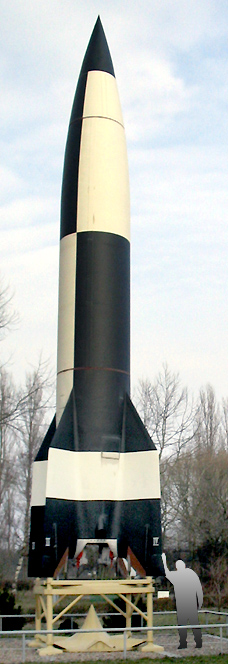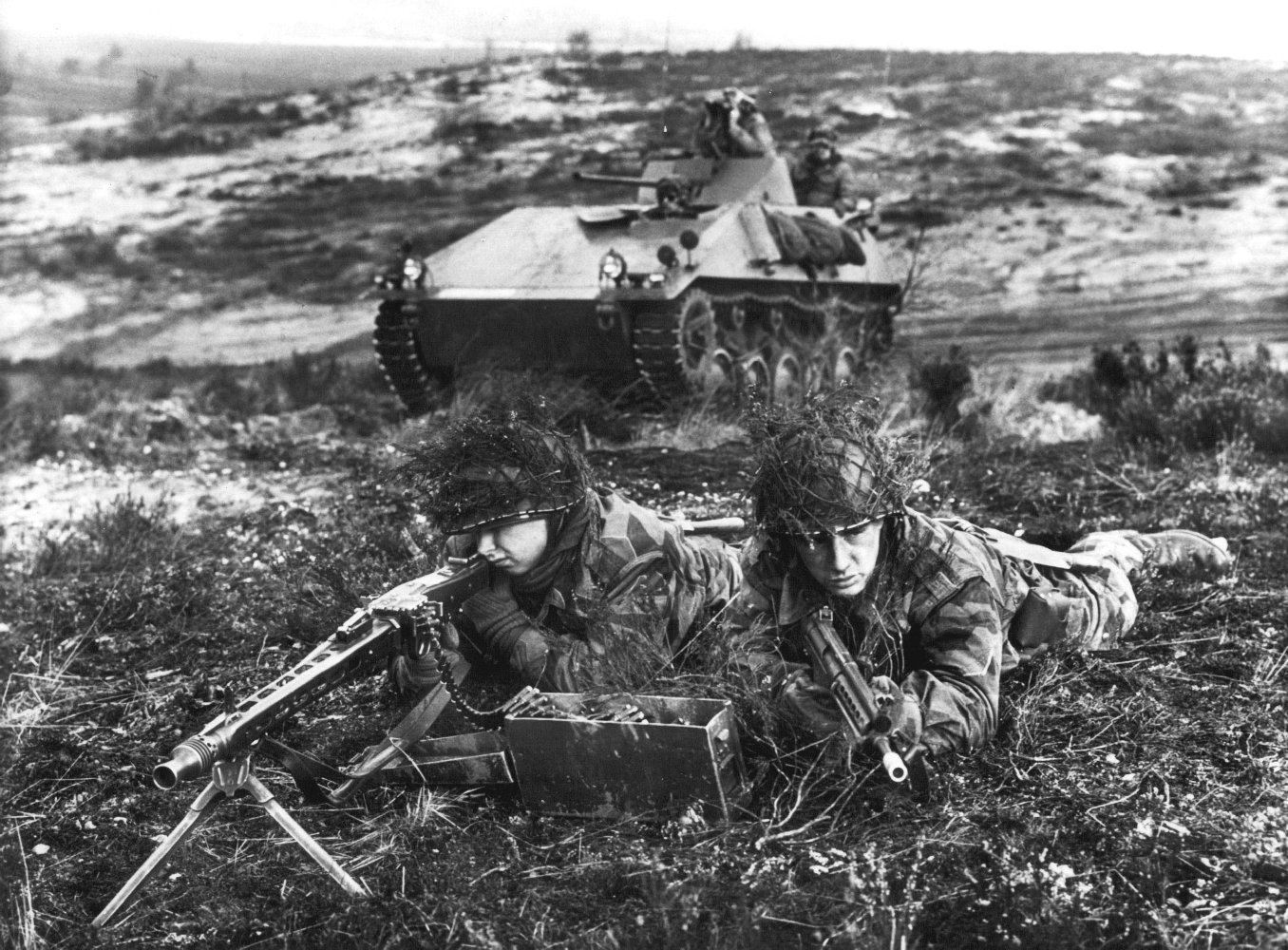|
V-2 Rocket
The V2 (), with the technical name ''Aggregat (rocket family), Aggregat-4'' (A4), was the world's first long-range missile guidance, guided ballistic missile. The missile, powered by a liquid-propellant rocket engine, was developed during the Second World War in Nazi Germany as a "V-weapons, vengeance weapon" and assigned to attack Allies of World War II, Allied cities as retaliation for the Strategic bombing during World War II#The British later in the war, Allied bombings of German cities. The rocket also became the first artificial object to travel into space by crossing the Kármán line (edge of space) with the vertical launch of MW 18014 on 20 June 1944. Research of military use of long-range rockets began when the graduate studies of Wernher von Braun were noticed by the German Army. A series of prototypes culminated in the A4, which went to war as the . Beginning in September 1944, more than 3,000 were launched by the Wehrmacht against Allied targets, first London and ... [...More Info...] [...Related Items...] OR: [Wikipedia] [Google] [Baidu] [Amazon] |
Historical Technical Museum, Peenemünde
The Peenemünde Historical Technical Museum ( or HTM), former "Peenemünde Information Centre for History and Technology" ( or HTI), is a museum, founded in 1991, in the observation bunker and site of the former power station in Peenemünde on the island of Usedom in eastern Mecklenburg-Vorpommern in Germany. The museum is dedicated to the history of the Peenemünde Army Research Centre and the Luftwaffe test site of "Peenemünde-West", especially the rockets and missiles developed there between 1936 and 1945. Since January 2007 the information centre has become an anchor point on the European Route of Industrial Heritage (ERIH), a Europe-wide network of industrial monuments, and a part of the ERIH themed routes for ''Energy'' and ''Transport & Communication''. In 2008 the museum had around 222,000 visitors including many school classes. Around €6.5 M were invested in the museum's renovation and expansion; a further investment of €3.9 M is planned. In 2002 the HTM was given th ... [...More Info...] [...Related Items...] OR: [Wikipedia] [Google] [Baidu] [Amazon] |
Mischgerät (V-2 Guidance Computer)
Designed in 1941 by Helmut Hölzer, the Mischgerät (mixer device) was the first fully electronic computing device, used to implement Hölzer’s V-2 rocket stability control equation during powered flight. It differentiated the voltages from the ''Vertikant'' (yaw and roll) and ''Horizont'' (pitch) gyroscopes to sense the gyro platform's divergence from its original orientation in pitch, yaw and roll, - and more crucially derived the rate of divergence - and output amplified correcting voltages to the steering servos for the exhaust vanes and external rudders. Technical concepts tested with the smaller Aggregat#A5 (1938–1942), A5 research rocket included use of the Siemens Vertikant stability control system with rate gyros. This approach didn't scale well for the larger and higher performance V-2. From his previous glider ground speed indicator concept in the mid-1930s, Hölzer realized he could implement an electrical approximation of a stability control equation by processi ... [...More Info...] [...Related Items...] OR: [Wikipedia] [Google] [Baidu] [Amazon] |
German Army
The German Army (, 'army') is the land component of the armed forces of Federal Republic of Germany, Germany. The present-day German Army was founded in 1955 as part of the newly formed West German together with the German Navy, ''Marine'' (German Navy) and the German Air Force, ''Luftwaffe'' (German Air Force). , the German Army had a strength of 63,047 soldiers. History Overview A German army equipped, organized, and trained following a single doctrine and permanently unified under one command was created in 1871 during the unification of Germany under the leadership of Prussia. From 1871 to 1919, the title ''German Army (German Empire), Deutsches Heer'' (German Army) was the official name of the German land forces. Following the German defeat in World War I and the end of the German Empire, the main army was dissolved. From 1921 to 1935 the name of the German land forces was the ''Reichswehr, Reichsheer'' (Army of the Realm) and from 1935 to 1945 the name ''German Army (We ... [...More Info...] [...Related Items...] OR: [Wikipedia] [Google] [Baidu] [Amazon] |
Wernher Von Braun
Wernher Magnus Maximilian Freiherr von Braun ( ; ; 23 March 191216 June 1977) was a German–American aerospace engineer and space architect. He was a member of the Nazi Party and '' Allgemeine SS'', the leading figure in the development of rocket technology in Nazi Germany, and later a pioneer of rocket and space technology in the United States. As a young man, von Braun worked in Nazi Germany's rocket development program. He helped design and co-developed the V-2 rocket at Peenemünde during World War II. The V-2 became the first artificial object to travel into space on 20 June 1944. Following the war, he was secretly moved to the United States, along with about 1,600 other German scientists, engineers, and technicians, as part of Operation Paperclip. He worked for the United States Army on an intermediate-range ballistic missile program, and he developed the rockets that launched the United States' first space satellite Explorer 1 in 1958. He worked with Walt Disney ... [...More Info...] [...Related Items...] OR: [Wikipedia] [Google] [Baidu] [Amazon] |
MW 18014
MW 18014 was a German A-4 test rocket launched on 20 June 1944, at the Peenemünde Army Research Center in Peenemünde. It was the first man-made object to reach outer space, attaining an apogee of , well above the Kármán line that was established later as the lowest altitude of space. It was a vertical test launch, and was not intended to reach orbital velocity, so it returned and impacted Earth, making it the first sub-orbital spaceflight. Background Early A-4 rockets, despite being able to reach altitudes of 90 km, had suffered from multiple reliability problems. For example, a design fault in the forward part of the outer hull caused it to regularly fail mid-flight, resulting in the failure of as many as 70% of test launches. On one occasion, an A-4 rocket suffering from pogo oscillations during ascent veered 90 degrees off course then spiralled back down to its launch pit, killing four launch troops on site. The Peenemünde rocket team made a number of improve ... [...More Info...] [...Related Items...] OR: [Wikipedia] [Google] [Baidu] [Amazon] |
Kármán Line
The Kármán line (or von Kármán line ) is a conventional definition of the Outer space#Boundary, edge of space; it is widely but not universally accepted. The international record-keeping body Fédération Aéronautique Internationale, FAI (Fédération aéronautique internationale) defines the Kármán line at an altitude of above above mean sea level, mean sea level. While named after Theodore von Kármán, who calculated a theoretical limit of altitude for aeroplane flight at above Earth, the later established Kármán line is more general and has no distinct physical significance, in that there is a rather gradual difference between the characteristics of the atmosphere at the line, and experts disagree on defining a distinct boundary where the atmosphere ends and space begins. It lies well above the altitude reachable by conventional airplanes or high-altitude balloons, and is approximately where satellites, even on very eccentric trajectories, will Orbital decay, dec ... [...More Info...] [...Related Items...] OR: [Wikipedia] [Google] [Baidu] [Amazon] |
Strategic Bombing During World War II
World War II (1939–1945) involved sustained strategic bombing of railways, harbours, cities, workers' and civilian housing, and industrial districts in enemy territory. Strategic bombing as a military strategy is distinct both from close air support of ground forces and from Air supremacy#World War II, tactical air power. During World War II, many military strategists of air power believed that air forces could win major victories by attacking industrial and political infrastructure, rather than purely military targets. Strategic bombing often involved bombing areas inhabited by Non-combatant, civilians, and some campaigns were deliberately designed to target civilian populations in order to terrorism, terrorize them or to weaken their morale. International law at the outset of World War II did not specifically forbid the aerial bombardment of cities – despite the prior occurrence of such bombing during World War I (1914–1918), the Spanish Civil War (1936–1939), and t ... [...More Info...] [...Related Items...] OR: [Wikipedia] [Google] [Baidu] [Amazon] |
Allies Of World War II
The Allies, formally referred to as the United Nations from 1942, were an international Coalition#Military, military coalition formed during World War II (1939–1945) to oppose the Axis powers. Its principal members were the "Four Policemen, Big Four" – the United Kingdom, United States, Soviet Union, and Republic of China (1912–1949), China. Membership in the Allies varied during the course of the war. When the conflict broke out on 1 September 1939, the Allied coalition consisted of the United Kingdom, French Third Republic, France, and Second Polish Republic, Poland, as well as their respective Dependent territory, dependencies, such as British Raj, British India. They were joined by the independent dominions of the British Commonwealth: Canada, Australia, Dominion of New Zealand, New Zealand and Union of South Africa, South Africa. Consequently, the initial alliance resembled Allies of World War I, that of the First World War. As Axis forces began German invasion of ... [...More Info...] [...Related Items...] OR: [Wikipedia] [Google] [Baidu] [Amazon] |
Second World War
World War II or the Second World War (1 September 1939 – 2 September 1945) was a World war, global conflict between two coalitions: the Allies of World War II, Allies and the Axis powers. World War II by country, Nearly all of the world's countries participated, with many nations mobilising all resources in pursuit of total war. Tanks in World War II, Tanks and Air warfare of World War II, aircraft played major roles, enabling the strategic bombing of cities and delivery of the Atomic bombings of Hiroshima and Nagasaki, first and only nuclear weapons ever used in war. World War II is the List of wars by death toll, deadliest conflict in history, causing World War II casualties, the death of 70 to 85 million people, more than half of whom were civilians. Millions died in genocides, including the Holocaust, and by massacres, starvation, and disease. After the Allied victory, Allied-occupied Germany, Germany, Allied-occupied Austria, Austria, Occupation of Japan, Japan, a ... [...More Info...] [...Related Items...] OR: [Wikipedia] [Google] [Baidu] [Amazon] |
Liquid-propellant Rocket
A liquid-propellant rocket or liquid rocket uses a rocket engine burning liquid rocket propellant, liquid propellants. (Alternate approaches use gaseous or Solid-propellant rocket , solid propellants.) Liquids are desirable propellants because they have reasonably high density and their combustion products have high Specific impulse, specific impulse (''I''sp). This allows the volume of the propellant tanks to be relatively low. Types Liquid rockets can be monopropellant rockets using a single type of propellant, or bipropellant rockets using two types of propellant. Tripropellant rockets using three types of propellant are rare. Liquid oxidizer propellants are also used in hybrid rockets, with some of the advantages of a solid rocket. Bipropellant liquid rockets use a liquid fuel such as liquid hydrogen or RP-1, and a liquid oxidizer such as liquid oxygen. The engine may be a cryogenic rocket engine, where the fuel and oxidizer, such as hydrogen and oxygen, are gases which hav ... [...More Info...] [...Related Items...] OR: [Wikipedia] [Google] [Baidu] [Amazon] |
Missile Guidance
Missile guidance refers to a variety of methods of guiding a missile or a guided bomb to its intended target. The missile's target accuracy is a critical factor for its effectiveness. Guidance systems improve missile accuracy by improving its Probability of Guidance (Pg). These guidance technologies can generally be divided up into a number of categories, with the broadest categories being "active", "passive", and "preset" guidance. Missiles and guided bombs generally use similar types of guidance system, the difference between the two being that missiles are powered by an onboard engine, whereas guided bombs rely on the speed and height of the launch aircraft for propulsion. History The concept of unmanned guidance originated at least as early as World War I, with the idea of remotely guiding an airplane bomb onto a target, such as the systems developed for the R.F.C. World War I Drone Weapons, first powered drones by Archibald Low (the father of radio guidance). In World War ... [...More Info...] [...Related Items...] OR: [Wikipedia] [Google] [Baidu] [Amazon] |
Aggregat (rocket Family)
The ''Aggregat'' series (German for "Aggregate") was a set of ballistic missile designs developed in 1933–1945 by a research program of Nazi Germany's Army ( ''Heer''). Its greatest success was the A4, more commonly known as the V2. A1 (1933) The A1 was the first rocket design in the ''Aggregat'' series. It was designed in 1933 by Wernher von Braun at the German Army research program at Kummersdorf headed by Colonel Dr Walter Dornberger. The A1 was the grandfather of most modern rockets. The rocket was long, in diameter, and had a takeoff weight of . The engine, designed by Arthur Rudolph, used a pressure-fed rocket propellant system burning ethanol and liquid oxygen, and produced 2.9 kN (660 lbf) of thrust for 16 seconds. The LOX tank was located within the fuel tank and insulated with a fiberglass material. The rocket was stabilized by a 3 axes gyroscope system in the nose, supplied by Kreiselgeräte GmbH. The rocket could not be rotated for stability as with a ... [...More Info...] [...Related Items...] OR: [Wikipedia] [Google] [Baidu] [Amazon] |








